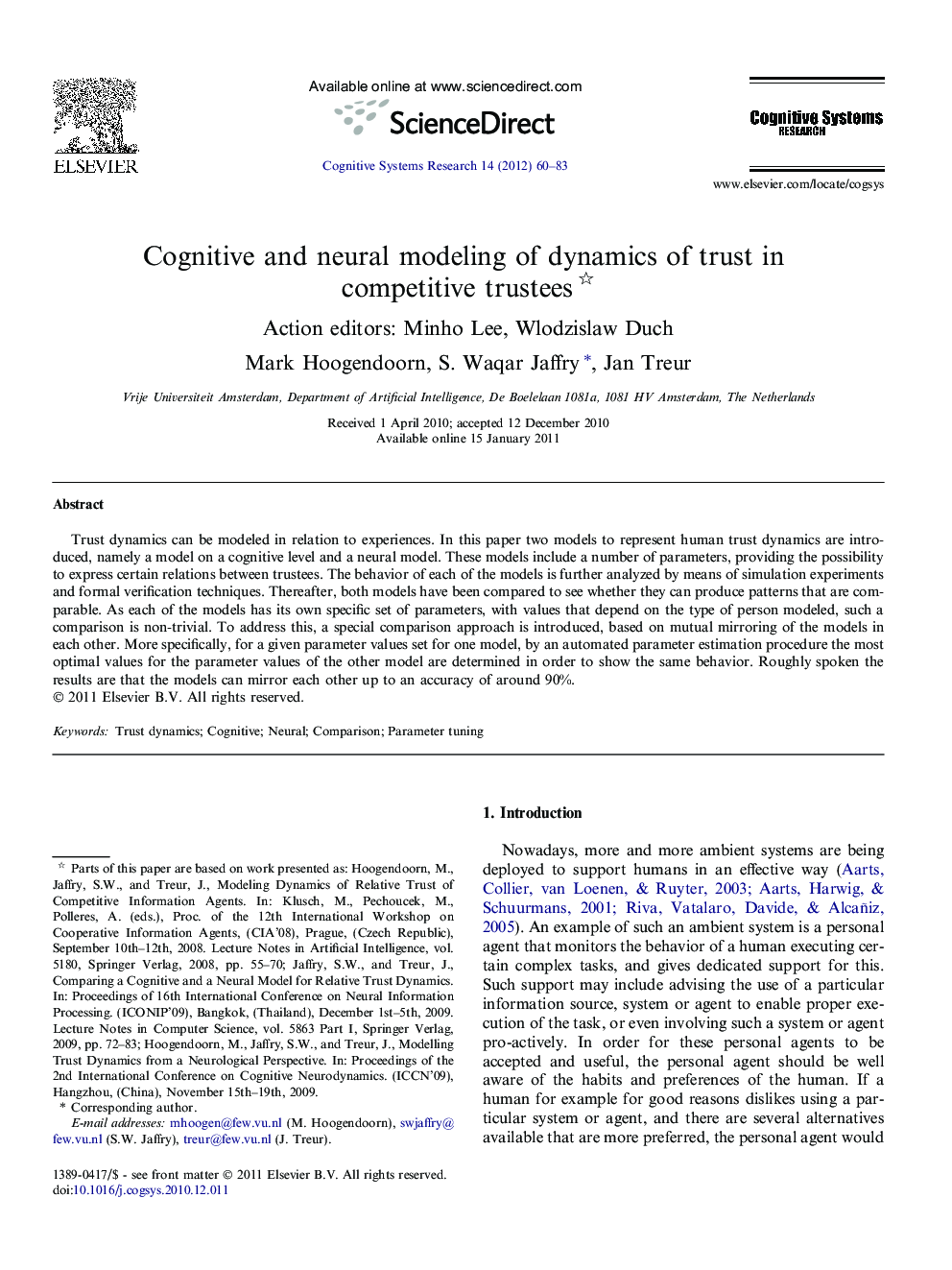| Article ID | Journal | Published Year | Pages | File Type |
|---|---|---|---|---|
| 378469 | Cognitive Systems Research | 2012 | 24 Pages |
Trust dynamics can be modeled in relation to experiences. In this paper two models to represent human trust dynamics are introduced, namely a model on a cognitive level and a neural model. These models include a number of parameters, providing the possibility to express certain relations between trustees. The behavior of each of the models is further analyzed by means of simulation experiments and formal verification techniques. Thereafter, both models have been compared to see whether they can produce patterns that are comparable. As each of the models has its own specific set of parameters, with values that depend on the type of person modeled, such a comparison is non-trivial. To address this, a special comparison approach is introduced, based on mutual mirroring of the models in each other. More specifically, for a given parameter values set for one model, by an automated parameter estimation procedure the most optimal values for the parameter values of the other model are determined in order to show the same behavior. Roughly spoken the results are that the models can mirror each other up to an accuracy of around 90%.
